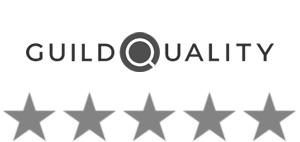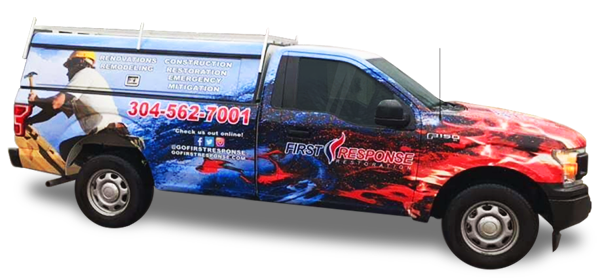Water is an essential element for life, but when it infiltrates your walls, it can lead to a host of problems. Have you ever wondered what actually happens if water seeps into the structure of your home? The consequences might be more surprising than you think.
Leaky pipes, roof damage, or even natural disasters like floods can all contribute to water intrusion in your walls. While it may seem like a minor issue, the repercussions can be significant and far-reaching. From immediate damage to long-term risks, addressing water in your walls requires prompt action and a thorough understanding of the potential consequences.
In this article, we will explore the immediate and hidden threats of water intrusion in your walls, discuss the potential long-term risks of untreated water damage, and offer preventative measures to protect your walls from further harm. Whether you’re a homeowner or a renter, understanding the impact of water in your walls is crucial for maintaining the integrity of your living space.
Key Takeaways:
- Water intrusion in your walls can lead to significant damage and long-term risks.
- Immediate consequences of water in your walls include mold growth, weakened infrastructure, and electrical hazards.
- Hidden threats can include insulation deterioration, pest infestations, and structural decay.
- Addressing water damage promptly and effectively is crucial to minimize the potential risks.
- Preventative measures, such as regular inspections and maintenance, can help protect your walls from water intrusion.
The Immediate Consequences of Water Intrusion in Walls
When water infiltrates the walls of your home, it can lead to a host of immediate consequences that pose a threat to both the structural integrity of your property and the health and safety of its occupants. Understanding these consequences is essential to taking swift action and preventing further damage.
1. Mold and Mildew Growth: One of the most immediate consequences of water intrusion in walls is the growth of mold and mildew. These fungi thrive in moist environments and can quickly spread throughout your home, releasing spores that can cause respiratory issues and allergic reactions.
2. Structural Damage: When water seeps into the walls, it can compromise the structural integrity of your home. Prolonged exposure to moisture weakens the building materials, leading to warping, rotting, and deterioration. This can eventually result in sagging ceilings, cracks in the walls, and even collapse in severe cases.
3. Electrical Hazards: Water and electricity are a dangerous combination. If water infiltrates the walls and comes into contact with electrical systems, it can pose a significant risk of electrical shock or even fire. This can endanger the occupants of the house and cause extensive damage to the property.
4. Damage to Personal Belongings: Water intrusion in walls can also result in damage to personal belongings such as furniture, electronics, and cherished heirlooms. The moisture can cause these items to warp, mold, or become irreparably damaged, leading to substantial financial losses.
5. Unpleasant Odors: When water infiltrates the walls, it creates a damp environment that fosters the growth of bacteria and mold. These organisms release unpleasant odors that can permeate throughout the house, making it an unpleasant living environment.
Understanding the immediate consequences of water infiltration in walls highlights the urgency of addressing such issues promptly. By taking immediate action and enlisting the help of professionals, homeowners can mitigate the damage and protect their investment.
Identifying the Hidden Threats of Water in Your Walls
Water intrusion in walls can lead to more than just visible damage. There are hidden threats that can have serious consequences if left unaddressed. Identifying these threats is crucial in order to mitigate further damage and protect the structural integrity of your property.
One of the hidden threats of water in your walls is the growth of mold and mildew. When moisture is present, it creates the perfect environment for these fungi to thrive. Mold and mildew not only cause unsightly stains and odors, but they also pose significant health risks. Exposure to mold spores can trigger allergic reactions, respiratory problems, and even infections.
Another hidden threat is the deterioration of building materials. When water infiltrates your walls, it can weaken the structure over time. Wood studs, drywall, and insulation can all suffer damage from prolonged exposure to moisture. This can result in structural instability, compromising the safety of your property.
In addition to mold growth and material deterioration, water in your walls can also cause electrical hazards. If water comes into contact with electrical wiring or outlets, it can lead to short circuits, electrical fires, and electrocution risks. These hazards can be especially dangerous if the water intrusion goes unnoticed and the electrical system remains powered.
Furthermore, water in your walls can attract pests and insects. Moisture provides a breeding ground for pests like termites, ants, and cockroaches. These unwanted visitors can cause further damage to your property and create additional headaches.
It is important to be vigilant and proactive in identifying these hidden threats of water in your walls. Regular inspections, moisture detection tools, and professional assessments can help uncover any potential issues before they escalate.
Next, we will explore the long-term risks of untreated water damage and the importance of remediation strategies. It is crucial to address water intrusion in a timely manner to prevent further damage and protect your property.
What Happens if Water Gets in Your Walls?
Water intrusion in your walls can lead to various detrimental consequences. If water finds its way into the structural components of your walls, it can cause significant damage and pose a serious threat to the integrity and safety of your home.
When water seeps into your walls, it can result in the following issues:
- Mold and Mildew Growth: Excess moisture provides an ideal environment for mold and mildew to thrive. These microorganisms can not only cause unpleasant odors but also contribute to respiratory problems and allergic reactions.
- Structural Damage: Continued exposure to water can weaken the structural integrity of your walls. It can cause the wood to rot, drywall to deteriorate, and paint to peel, compromising the stability of your home.
- Electrical Hazards: Water and electricity do not mix well. If water infiltrates the wiring within your walls, it can lead to short circuits, electrical fires, and pose a significant risk to your safety.
- Health Risks: Water damage can create an unhealthy living environment. Moisture-laden walls can release harmful contaminants, such as volatile organic compounds (VOCs), which can have adverse effects on your health.
- Poor Indoor Air Quality: Water intrusion in your walls can contribute to poor indoor air quality. Stagnant water can emit musty odors and lead to the accumulation of airborne pollutants, affecting the overall comfort of your home.
It is crucial to address water intrusion in your walls promptly to prevent further damage and mitigate potential health and safety risks. Seeking professional assistance is highly recommended to ensure thorough inspection, appropriate remediation, and effective restoration of your walls.
Professional Versus DIY Remediation Strategies
When it comes to addressing water damage in your walls, you have two options: hiring a professional or attempting a do-it-yourself (DIY) approach. Both options have their pros and cons, and understanding them can help you make an informed decision.
Professional Remediation Strategies:
- Expertise: Professionals have the knowledge and experience to assess the extent of the damage, identify underlying issues, and determine the most effective remediation techniques.
- Efficiency: Professionals use specialized equipment and techniques to efficiently remove water, dry out the affected areas, and restore your walls to their pre-damaged condition.
- Quality Results: Hiring professionals ensures thorough remediation, reducing the risk of mold growth, structural damage, and other long-term issues.
- Insurance Coverage: In many cases, water damage remediation conducted by professionals is covered by insurance, reducing your financial burden.
DIY Remediation Strategies:
- Cost Savings: DIY remedies can be more affordable upfront, as you won’t have to pay for professional services.
- Quick Response: You can start addressing the water damage immediately, without having to wait for professional assistance.
- Learning Opportunity: Taking a hands-on approach allows you to gain knowledge and experience in dealing with water damage.
- Small-Scale Damage: DIY strategies may be suitable for minor water intrusions that can be easily handled without professional intervention.
However, it’s important to consider the limitations of DIY remediation. Without proper knowledge and equipment, you may inadvertently cause further damage, leave moisture behind, or overlook hidden issues.
If you choose the DIY route, be sure to thoroughly research the necessary steps, use appropriate safety measures, and closely monitor the progress. It’s also advisable to consult with professionals for guidance and assistance.
Ultimately, the decision between hiring professionals or opting for a DIY approach depends on the severity and complexity of the water damage, your skills and resources, and your comfort level in handling the situation. In cases of extensive damage or potential risks, it’s generally recommended to seek professional assistance to ensure comprehensive remediation.
Long-Term Risks of Untreated Water Damage
Ignoring water damage in your walls can lead to severe long-term risks that can compromise the integrity of your home and your health. The effects of untreated water damage can extend far beyond the initial incident and worsen over time if not addressed promptly and adequately.
Structural Damage: Water intrusion within the walls can cause structural damage, weakening the foundations of your home. Over time, this can result in sagging floors, cracks in the walls, and even the collapse of vulnerable areas.
Mold and Mildew Growth: Excess moisture from water damage creates the perfect environment for mold and mildew growth. These fungi can proliferate behind walls, contributing to poor indoor air quality and potentially causing respiratory issues, allergies, and other health problems.
Deterioration of Materials: Water can damage various materials within your walls, including drywall, insulation, and framing. Over time, these materials can deteriorate, leading to costly repairs or even the need for complete replacement.
Pest Infestation: Damp walls attract pests such as termites, ants, and rodents. These pests can further weaken the structural integrity of your home and introduce additional health risks to occupants.
Electrical Hazards: Water can infiltrate electrical components within the walls, increasing the risk of electrical malfunctions, short circuits, and potential fires. This poses a significant safety hazard to anyone residing in the affected property.
It is crucial to address water damage promptly and effectively to mitigate these long-term risks. Hiring a professional water damage restoration company can ensure thorough cleanup, drying, and remediation, minimizing the potential for long-lasting consequences.
Implementing preventative measures and maintaining a proactive approach to water damage prevention can help safeguard your home against future incidents and reduce the likelihood of experiencing these long-term risks.
Preventative Measures to Protect Your Walls from Water Damage
Preventing water damage to your walls is crucial for maintaining the structural integrity of your home and avoiding costly repairs. By taking proactive measures, you can effectively safeguard your walls from water intrusion. Here are some preventative steps you can take:
- Inspect your gutters and downspouts: Regularly check your gutters and downspouts for any blockages or damages. Clean out any debris, such as leaves and twigs, to ensure proper water flow.
- Install gutter guards: Gutter guards are a great investment as they prevent debris from clogging your gutters, allowing water to flow freely. This helps in preventing overflow and potential water damage to your walls.
- Monitor your landscaping: Make sure the ground around your home is properly graded to direct water away from the foundation. Additionally, position sprinklers and irrigation systems away from the walls to minimize excess moisture.
- Seal cracks and gaps: Conduct regular inspections of your walls, windows, and doors for any cracks or gaps. Seal them promptly with weatherproof caulk or sealant to prevent water from seeping into your walls.
- Install a vapor barrier: Consider installing a vapor barrier on the interior walls of your basement or crawl space. This helps prevent moisture from penetrating through the walls and causing water damage.
- Ensure proper ventilation: Proper ventilation is essential for preventing excess moisture buildup. Use exhaust fans in bathrooms and kitchens, and ensure that attic spaces are well-ventilated to prevent condensation and mold growth.
By implementing these preventative measures, you can significantly reduce the risk of water damage to your walls and protect the overall integrity of your home. Remember, early prevention is key to avoiding costly repairs and preserving the value of your property.
Conclusion
In conclusion, water intrusion in your walls can lead to a range of immediate and long-term consequences. If left untreated, it can cause structural damage, mold growth, and compromised indoor air quality, posing health risks to you and your family.
Identifying the signs of water damage, such as dampness, discoloration, or peeling paint, is crucial in preventing further issues. Whether it’s a burst pipe, leaking roof, or faulty plumbing, addressing the source of water intrusion promptly is essential to mitigate the damage.
While some homeowners may attempt DIY remedies, it’s important to acknowledge the limitations of such approaches. Hiring a professional restoration company ensures a comprehensive and effective solution, with trained experts equipped with the necessary tools and knowledge to tackle the issue.
To safeguard your walls and prevent water damage, implementing proactive measures is key. Regularly inspecting your home for potential vulnerabilities, maintaining proper drainage systems, and sealing any cracks or gaps can significantly reduce the risk of water intrusion.

















